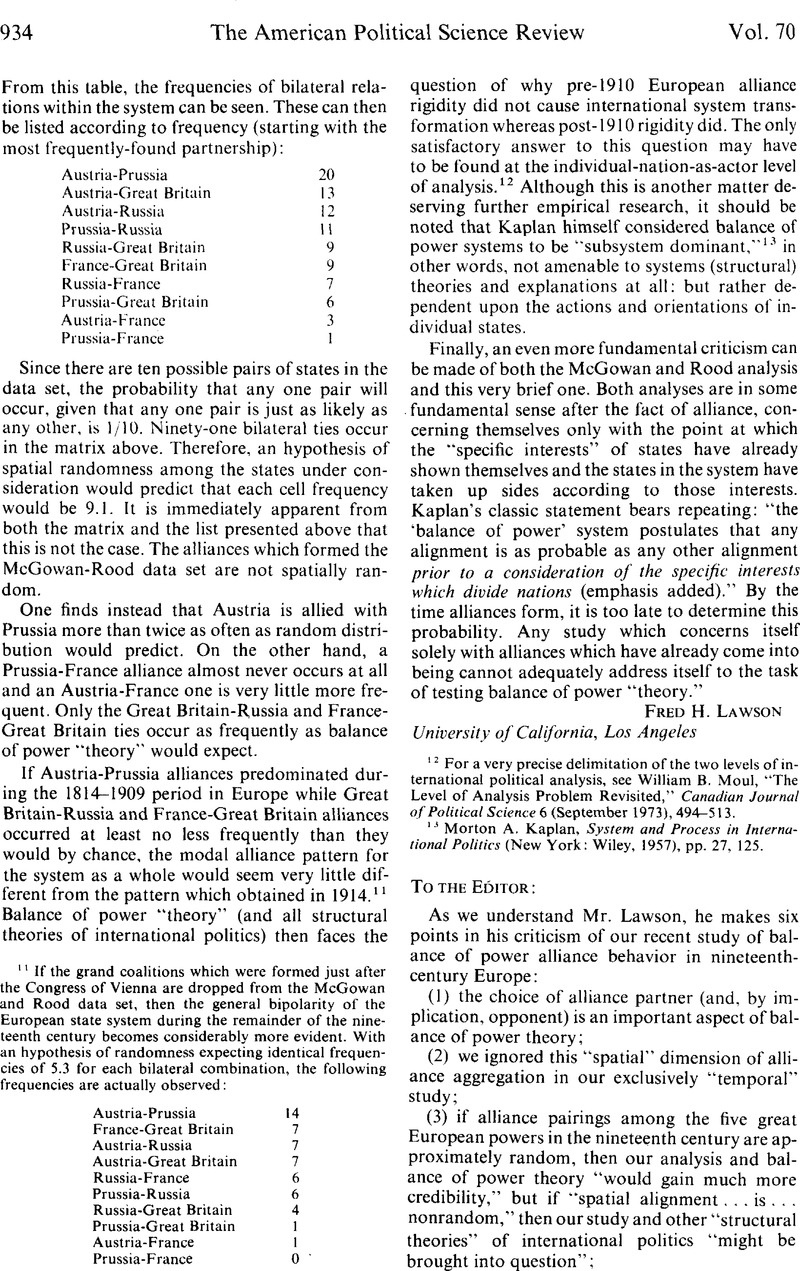No CrossRef data available.
Published online by Cambridge University Press: 01 August 2014

1 We made these data available to Mr. Lawson at his request, a fact he fails to acknowledge.
2 Moul, William B., “The Level of Analysis Problem Revisited,” Canadian Journal of Political Science, 6 (09, 1973), 494–513CrossRefGoogle Scholar.
3 Ibid., pp. 501–502.
4 The errors are: (1) our alliances number 55, not 54; (2) the Austria-Prussia pair has 21, not 20 alliances, and (3) the Austria-Great Britain pair has 12, not 13. These correct figures are used in the new analysis we report in this communication.
5 Rood, Robert M., “Agreement in the International System” (Ph.D. dissertation in Political Science, Syracuse University, 1973), 88, 183–201Google Scholar.
6 Kuh, Edwin, “The Validity of Cross-Sectionally Estimated Behavior Equations in Time Series Applications,” Econometrica, 27 (1959), 197–214CrossRefGoogle Scholar.
7 McGowan, Patrick J. and Rood, Robert M., “Alliance Behavior in Balance of Power Systems: Applying a Poisson Model to Nineteenth-Century Europe,” American Political Science Review, 69 (09, 1975), 863CrossRefGoogle Scholar.
8 Kaplan, Morton A., System and Process in International Politics (New York: Wiley Science Editions, 1964)Google Scholar, Preface.
9 Rood, , “Agreement in the International System,” pp. 159–163Google Scholar; Brams, Steven J. and O'Leary, Michael K., “An Axiomatic Model of Voting Bodies,” American Political Science Review, 64 (June, 1970), 449–470CrossRefGoogle Scholar.
10 Rood, Robert M., “The Dyadic Distribution of Alliance Commitments,” Columbia: Department of Government and International Studies, University of South Carolina, mimeo, 1975Google Scholar.
11 That is, the patterned relationships of international conflict (magnitude of war within dyads) certainly are “specific interests which divide nations.”
12 Feller, William, An Introduction to Probability Theory and Its Applications, 3rd ed. (New York: Wiley, 1968), 160–161Google Scholar.
13 Feller, , Probability Theory, p. 161Google Scholar.
14 Kaplan, Morton A., “The New Great Debate: Traditionalism vs. Science in International Relations,” in Knorr, K. and Rosenau, J. N., eds., Contending Approaches to International Politics (Princeton: Princeton University Press, 1969), pp. 38–61Google Scholar.
Comments
No Comments have been published for this article.